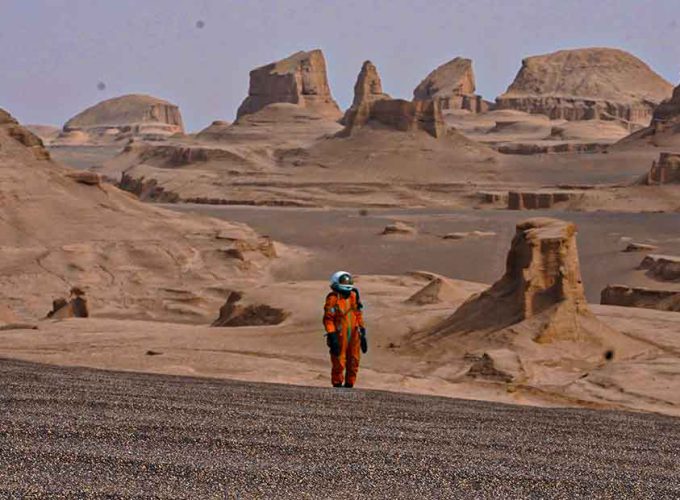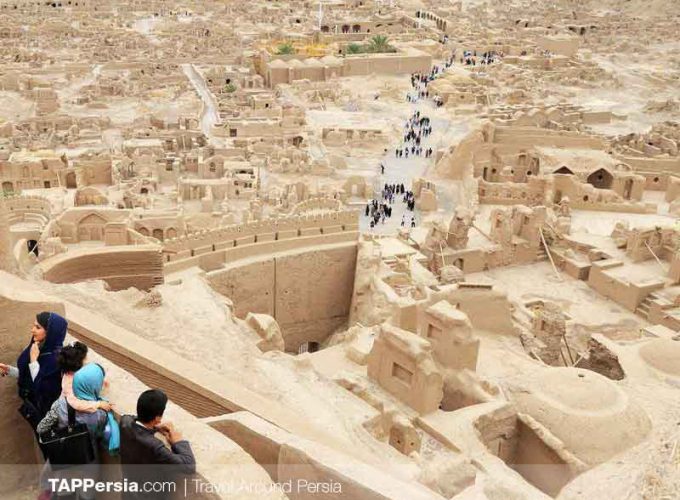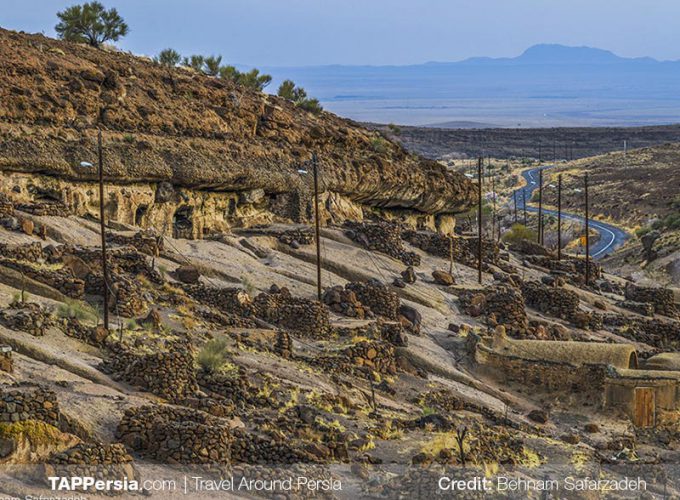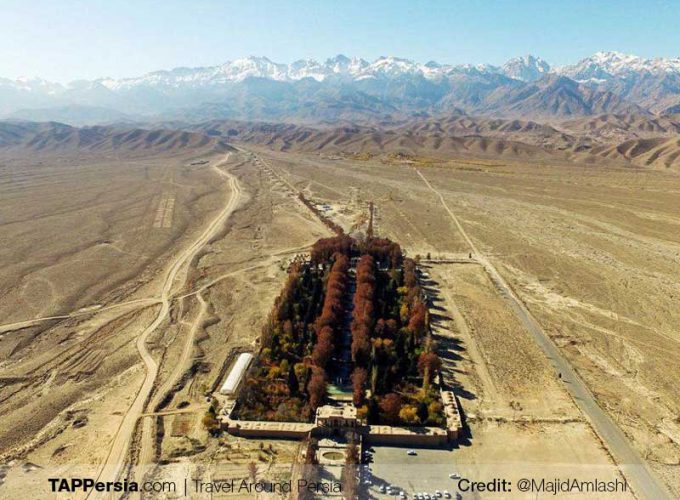In Kerman, on Shariati Street, there is a beautiful Iranian traditional door. The door leads you to Sanati Contemporary Arts Museum. The museum is full of rich and exquisite treasures of great domestic and foreign artists. It is not bragging to say that after the Tehran Museum of Contemporary Art, the Kerman Sanati Museum has the most valuable contemporary masterpieces of art in our country. If you love museums and contemporary art you will love this top attraction in Kerman. Join us to learn more about Sanati Contemporary Arts Museum.
Art Collection in the Sanati Contemporary Arts Museum
The Kerman Sanati Museum holds about 1,200 profound artworks. Most of them include bronze, plaster, marble, and wood sculptures, and moreover, stone mosaic arts. There are also eyecatching oil and watercolor paintings and unbelievably beautiful charcoal drawings.
There are a variety of styles and techniques that you can enjoy watching. You can see different styles such as minimalists, conceptualists, abstracts, miniaturists, pop arts, and many more.
Half of the works in the museum belong to Seyed Ali Akbar Sanati. He is one of the famous sculptors and painters of this land. The rest of the artworks belong to more than 83 contemporary Iranian artists and 16 foreign artists.

Here is the name of some of these artists that actually you might know;
- Foreign contemporary artists such as Auguste Rodin, Henry Moore, Ben Nicholson, Albermarke, Emile Nolde, Blockader, Bonati, Vasily Kandinsky, Jacob Epstein, and Tom Phillips.
- Also Iranian contemporary artists including Kamal Al-Molk, Ali Akbar Yasemi, Jareh Tabatabai, Mohammad Heydarian Arjangi, Parviz Tanavoli, and Sohrab Sepehri.
The History of the Sanati Museum

The museum dates back to about 80 years ago to the time of a great man, Haj Akbar Sanatizadeh. His tomb is now inside the library of this cultural complex. Haj Akbar built an orphanage for orphans of Kerman, especially for those with potentials in art.

This kind and compassionate man established Kerman’s Sanati Orphanage in 1917. It covers an area of about 45,000 square meters. According to the head of education of this institute, about 4,000 children were under the care and maintenance of this orphanage. And happily, most of them were educated and became successful people.
Among the orphans, there were some who had no certification. So Haj Akbar gave his own last name to them. That’s why many of the children in the institute had the same last name as HIM. Now before talking about how the orphanage turned into a museum let me introduce you to the father of sculpture in Iran. This way I might save you some confusion.
The Father of Iranian Sculpture

Not to confuse Haj Akbar Sanati the founder of the orphanage with the great artist Ali Akbar Sanati I have to remind you that many of the children of the orphanage had the same last name, “Sanati”. Professor Ali Akbar Sanati is the father of sculpture in Iran. Among the orphan children, there was a very talented student.
From the very first days, he showed Haj Akbar that he was unparalleled in painting. When Haj Akbar learned about this child and his great talent in painting and sculpture, he encouraged and supported him. This child had lost his father when he was only 6 months old, and his mother at the age of 8. For the same reason, Haj Akbar named him after himself, Ali Akbar Sanati. Thus this child grew up with the name of the founder of the orphanage.

The father of Iranian sculpture started his basic art training under the Kermani masters’ supervision. And then continued his specialized sculpture courses in Tehran. He was under the supervision of professors such as Behzad and Taherzadeh (miniaturists), Abolhassan Sedighi (sculptor), and Professor Heydarian.

Professor Ali Akbar Sanati is also the only Iranian artist that two museums are named after him. The Kerman and Tehran Sanati Museums, have been registered in his honor. The distinctive and unique feature of his works is that he created images in the form of sculptures.
One of his most famous works is Fereshteh Adalat, at the entrance of the Palace of Justice in Tehran. He designed and created the masterpiece with the help of Abolhassan Sedighi and Arjang Rahimzadeh.
The Orphanage Becomes a Museum

The cultural activities of the orphanage began in 1950, with the construction of a workshop. They held an exhibition to present professor Sanati’s paintings and sculptures.
And then in 1963, they built one of the first libraries of Kerman in this cultural complex. Today the library is a specialized library of art and exquisite art resources full of valuable books.
And finally, the Sanati Orphanage was turned into a museum in 1977. They did so to preserve and display the works of professor Ali Akbar, this great sculptor, and painter. And it is to preserve and display the grand works of other Iranian and international artists, as well.
The Architecture of Kerman’s Sanati Museum

The main building of the museum has linear architecture. The foundation is of adobe and the rest is brick. The roof of this museum as in most traditional Iranian architecture is a dome.

There is a portico in front of the building. In Iranian architecture, the porticos are to protect, shade, and cool the rooms. The entrance is a combination of turquoise and black tiles and bricks. They added the entrance with these decorations to the main building in 1949. And it has given a special view to the building.

The main building does not have a special decoration. But from the architectural point of view, considering that it was built at a certain point in the history of Iran’s architecture, it is important. In other words, in fact, it shows the last days of the traditional architecture in Iranian constructions.

The museum surroundings are also gardened with pretty Iranian gardening methods. This museum, which is one of the attractions of Kerman City, has been renovated several times in different periods. The last reconstruction dates back to 2014.
Where Is Kerman’s Sanati Museum?

In the southeast of Kerman City, on Shariati Street, between Bagh-e-Melli Square and Tahmasebabad intersection, you can find that beautiful Iranian traditional door.
Final Words
If you are looking for other attractions in Kerman, don’t worry there is a lot to visit and enjoy in this wonderful city. The closest attraction sites to the Sanati Museum are Harandy Garden Museum, The Grand Bazaar of Kerman, and Old Walls of Kerman.
I hope you have enjoyed your time learning about this great art museum. If so please let us know in the comments. For more information or booking a tour, you can contact us via the contact information at the end of this page.














Comment (0)